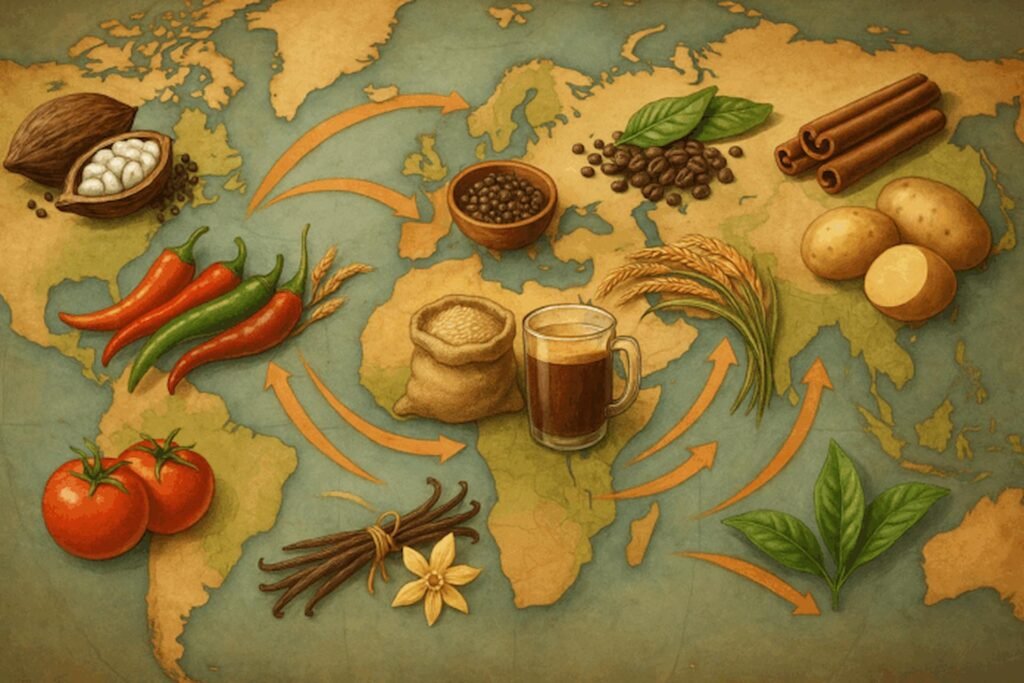
11 Forgotten Food Origins That Reveal Global Trade Secrets
Introduction
Have you ever wondered how your favorite foods ended up on your plate? From humble grains to exotic spices, every bite tells a story of exploration, conquest, and centuries of global trade. In this listicle, we’ll uncover 11 forgotten food origins that reveal how human curiosity—and commerce—reshaped diets and cultures across the world. Get ready to travel through time and taste history!
1. Tomatoes: From the Andes to Italy
Believe it or not, the beloved tomato, a symbol of Italian cuisine, actually hails from South America. Spanish explorers brought it to Europe in the 16th century, where it was initially thought to be poisonous. Only centuries later did it become the foundation of pizza, pasta, and Mediterranean sauces—an example of how trade transformed an exotic fruit into a culinary staple.
2. Potatoes: The Peruvian Gift to the World
Originating in the Andes mountains, potatoes were cultivated by the Inca civilization long before European contact. After being exported to Europe, they became a lifesaver during famines and an agricultural backbone across continents. Today, this humble tuber feeds billions worldwide.
3. Chillies: From the Americas to Asia’s Heart
It’s hard to imagine Indian curries or Thai cuisine without chilies, yet they’re native to Central and South America. Portuguese traders introduced them to Asia in the 15th century, sparking a fiery revolution in flavor that continues to define entire cuisines today.
4. Coffee: Ethiopia’s Energizing Export
Coffee’s origin traces back to the Ethiopian highlands, where legend says a goat herder named Kaldi discovered its stimulating powers. Arab traders cultivated and spread it to Yemen and beyond, fueling trade routes and social revolutions—from Ottoman coffeehouses to modern cafés.
5. Chocolate: From Aztec Rituals to Global Delight
Cacao beans were sacred to the Aztecs and Mayans, used both as currency and in ritual drinks. Spanish colonists brought them to Europe, where sugar and milk transformed bitter cacao into the chocolate we know and love—a sweet symbol of colonial trade and innovation.
6. Bananas: Southeast Asia’s Ancient Traveler
Bananas originated in Southeast Asia thousands of years ago, later spreading to Africa via early trade routes. By the 16th century, European colonizers carried them to the Americas. The fruit’s global journey also marks the rise of early agricultural empires and modern plantation economies.
7. Sugar: India’s Sweet Contribution
Sugarcane was first domesticated in India around 8,000 years ago. The technology of refining sugar spread through the Middle East to Europe, shaping economies and even fueling the transatlantic slave trade. A bittersweet legacy of commerce and conquest.
8. Rice: Asia’s Gift to the Globe
Domesticated in China over 9,000 years ago, rice became a cornerstone of Asian civilization before spreading worldwide through trade and colonization. From sushi to risotto, its versatility turned it into one of the most essential and traded foods on Earth.
9. Pineapples: Caribbean Treasure Turned Luxury
Native to South America, pineapples became a status symbol in 17th-century Europe. Their scarcity made them an exotic display of wealth at royal feasts. Today, thanks to global farming, this once-rare fruit sweetens plates across the world.
10. Tea: China’s Ancient Brew
Tea was discovered in China over 4,000 years ago and became a cornerstone of its culture and economy. The British East India Company’s hunger for tea reshaped trade routes, leading to the Opium Wars and the colonization of India—making tea a symbol of both cultural exchange and empire.
11. Spices: The Original Global Currency
Before Bitcoin or the dollar, spices ruled global trade. Pepper, cinnamon, nutmeg, and cloves from Asia drove European exploration, colonial expansion, and even wars. These tiny treasures changed cuisines and commerce forever, leaving behind a fragrant history of ambition and adventure.
Conclusion
Our global menu is a living museum of human movement, curiosity, and trade. From ancient explorers to modern supply chains, every food we enjoy carries a passport stamped with centuries of history. So the next time you sip coffee or savor chocolate, remember—you’re tasting the world’s most delicious trade secrets.
FAQs
1. Why are food origins important to know?
Understanding food origins reveals historical trade patterns, cultural exchanges, and the impact of globalization on what we eat today.
2. Which food changed global trade the most?
Spices and sugar arguably had the greatest influence, shaping colonial empires and transforming economies.
3. What foods originated in the Americas?
Tomatoes, potatoes, chilies, and chocolate all trace their roots to the Americas before global trade spread them worldwide.





